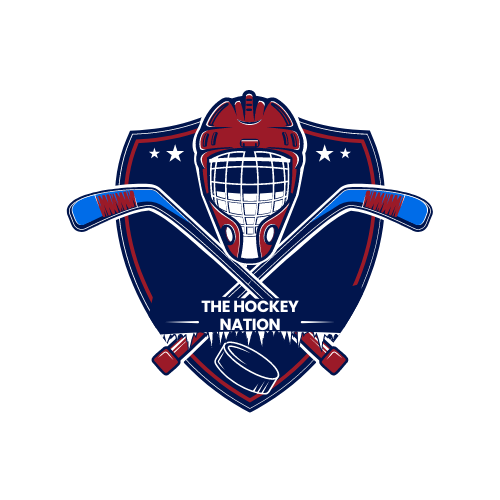You’re heading to a game but have no clue about the rules? You’ve come to the right place! Let’s dive into the basic rules of the hockey game while keeping it fun and interesting.
What are the basic rules of Hockey ?
In hockey, each team has 6 players on the ice, including the goalie. The goalie can be pulled for an extra player when needed. Teams usually consist of 4 lines, totaling 20 players.
Hockey is an intense sport with players typically on the ice for just 1 minute before being substituted on the fly. This process is known as a “line change.”
Due to the small size of the puck and the fast pace of the game, it can be easy to lose track of the action. That’s why lights flash after a goal is scored, ensuring everyone knows a goal has been made.
A game consists of 60 minutes of ice time, divided into 3 periods with 15-minute breaks between them. The play clock stops when the puck is off the ice, allowing for player substitutions. Games usually last around two and a half hours.
At the end of each period, teams switch sides. If the score is tied at the end of regulation, overtime is played. In the NHL, overtime is a 3-on-3 scenario where the first goal wins. If no goal is scored, the game moves into a shootout.

The Hockey Rink
The hockey rink is a fascinating place, with lines and dots each serving a purpose. Let’s break it down.
The rink is divided into three sections by two blue lines: the defensive zone (where your goal is), the offensive zone (where the opponent’s goal is), and the neutral zone (in the middle).
Near the goals, there’s the red goal line. You can play behind the goals, but not in the blue half-circle called the crease.
In the neutral zone, you’ll find the referee crease. There are 8 red dots on the rink, 4 with circles, known as faceoff zones. When play is stopped, the puck is placed at the nearest faceoff zone.
So there you have it! Now you’re ready to enjoy the game with a bit more understanding and excitement. Let’s hit the ice!
Penalties
Hockey isn’t just about skill and speed; it’s also about grit and physicality. And yes, sometimes that means fights break out. For many fans, this adds an extra thrill to the game. Physical contact is not only allowed but also a key tactical element. Checks are part and parcel of the sport. However, when it comes to fisticuffs, both parties usually receive a 5-minute penalty to cool off.
To keep things from spiraling out of control, the game has some strict rules. Here are the most crucial penalties to know:
Offside
The most important rule is offside. If you or a teammate crosses the blue line into the attacking zone before the puck, play is halted and a faceoff occurs in the neutral zone.
Stick Handling
Players can use their skates to play the puck, but kicking it into the goal is strictly prohibited. Additionally, the end of the stick must never be held above shoulder height.
Fouls
Common fouls include tripping, cross-checking, and hooking. Most penalties result in 2 minutes in the penalty box but can extend up to 10 minutes. During this time, the team plays a man down, creating a power play opportunity for the opposition. If the opposing team scores during this period, the penalized player can re-enter the game.
The severity of the penalty dictates the punishment. Offenders can be sidelined for up to 10 minutes or even ejected from the game and suspended from subsequent matches.
Hockey’s blend of speed, skill, and physicality makes it a captivating sport, and understanding these rules only adds to the excitement!
Most Common Hockey Terms
Face-off: After a stoppage in play, the excitement kicks off again with a face-off. The referee drops the puck at one of the many face-off circles, and two players across from each other battle fiercely for team possession. It’s a thrilling moment that can change the game’s momentum in an instant.
Icing: Behind each goal lies a thin blue line, while a red line stretches across the rink’s middle. If a player shoots the puck from behind the red line and it crosses the blue line in the offensive zone without touching another stick, icing is called. This results in a face-off in the defensive zone. However, if a team is shorthanded, they can ice the puck without penalty, adding a strategic twist to the game.
Penalty Shot: Picture this – a player with a clear chance at a goal is fouled, ruining their opportunity. The referee calls for a penalty shot, giving the tripped player a thrilling 1-on-1 showdown with the opposing goalie. The crowd holds its breath as the player skates towards the net. The rules are strict: only the fouled player can shoot, and only the player and goalie are allowed on the ice. The goalie must stay in the crease until the puck is in play. It’s a high-stakes moment with only one shot to score!
Overtime: When regulation ends in a tie, the tension rises with an extra sudden death overtime period of 5 minutes. In the NHL, it’s an exhilarating 3-on-3 battle where the first goal wins. If no one scores, the game moves to a nail-biting shootout. Different leagues have their own unique rules, but the excitement remains universal.
Playoffs: The playoffs are where legends are made. The top teams compete in a high-stakes tournament to decide the ultimate champion. In the NHL, 16 teams vie for glory. The best team in the Western Conference faces off against the lowest-seeded team, and so on. Each round is a best-of-7 series, with one team needing four wins to advance. It’s a gruelling test of skill, endurance, and heart, culminating in the crowning of the best team in the league.
